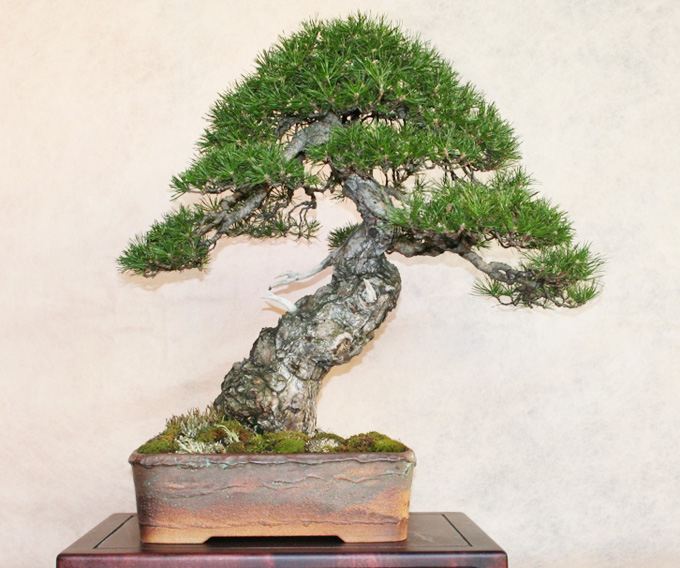 Great tree, great pot. This powerful old Scot’s pine by Enrico Savini was an overall winner in a contest that was held at the Art of Bonsai Project way back in 2005. The pot is by Isabelia.
Great tree, great pot. This powerful old Scot’s pine by Enrico Savini was an overall winner in a contest that was held at the Art of Bonsai Project way back in 2005. The pot is by Isabelia.
Scots pine (Pinus sylvestris) is another in our bonsai species series. I used to think they were Scotch pine (some people say Scotch pine is incorrect and others say it’s an acceptable variation) and had the notion that you could enjoy a sip of Scotch while working on you Scotch pine (oh well…).
No matter what you call them, Scots pine make excellent bonsai (as you can see from these photos), especially some of the small needled varieties. I won’t bore you with too much information (you can visit Wikipedia for that) except to say the Scotland is not the only place where these trees appear. Far from it in fact, they range all the way east way into Siberia (almost to the Pacific), south to near the Mediterranean Sea (in the mountains), and way up north into the Arctic Circle.
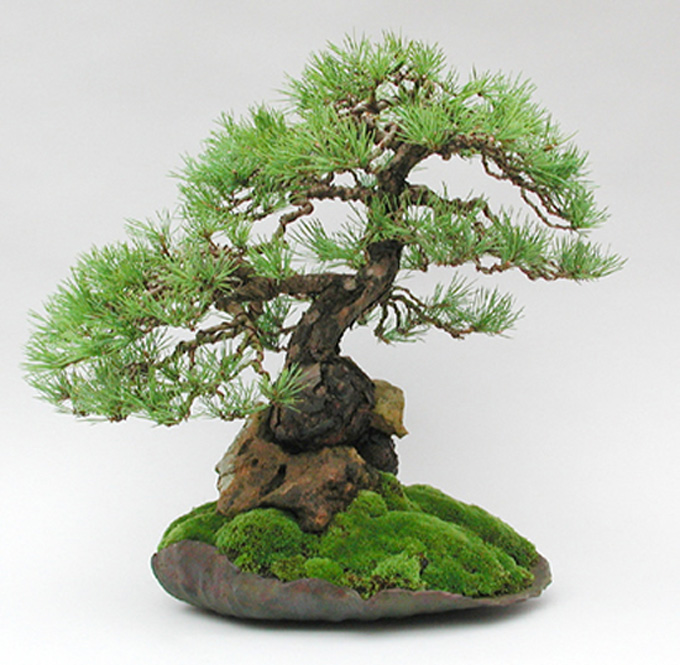 Here’s what Dan Barton (well known bonsai potter and bonsai artist) says about this sweet little tree: “Scots pine grown from seed planted through a hole in a stone in 1972. The tree expanded so much that it eventually split the rock. Planted in a Dansai pot and now in the collection of Marco Invernizzi, Italy.” I’m going to have to show my ignorance once again; does anyone know what a Dansai pot is? All I could find is a reference to a place named Dan Sai in Thailand
Here’s what Dan Barton (well known bonsai potter and bonsai artist) says about this sweet little tree: “Scots pine grown from seed planted through a hole in a stone in 1972. The tree expanded so much that it eventually split the rock. Planted in a Dansai pot and now in the collection of Marco Invernizzi, Italy.” I’m going to have to show my ignorance once again; does anyone know what a Dansai pot is? All I could find is a reference to a place named Dan Sai in Thailand
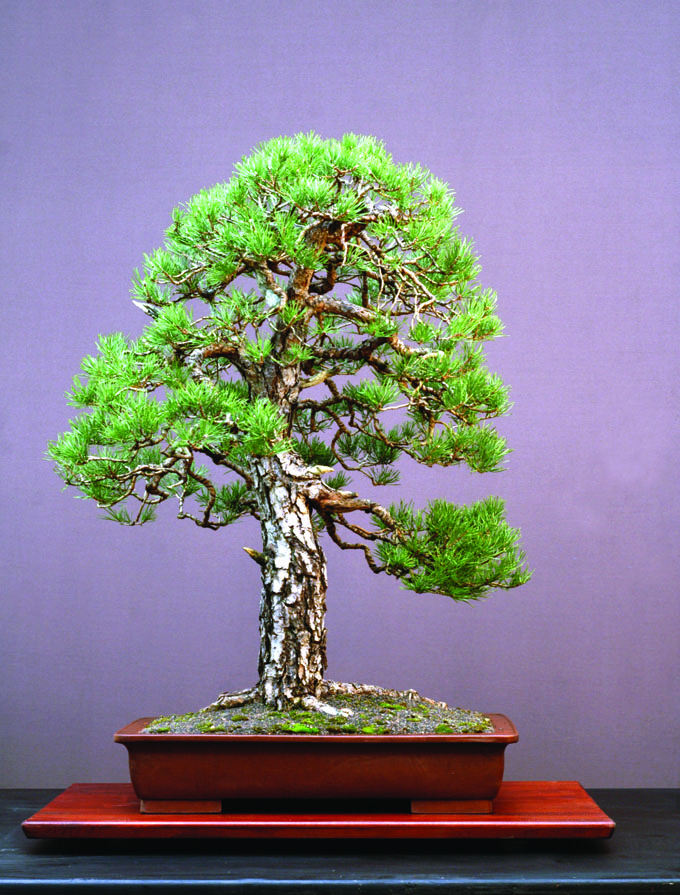 Couldn’t do Scots pine without Walter Pall’s famous tree. We’ve featured it in various stages and various times, including on the cover of Bonsai Today issue 104. Here’s a post from last year.
Couldn’t do Scots pine without Walter Pall’s famous tree. We’ve featured it in various stages and various times, including on the cover of Bonsai Today issue 104. Here’s a post from last year.
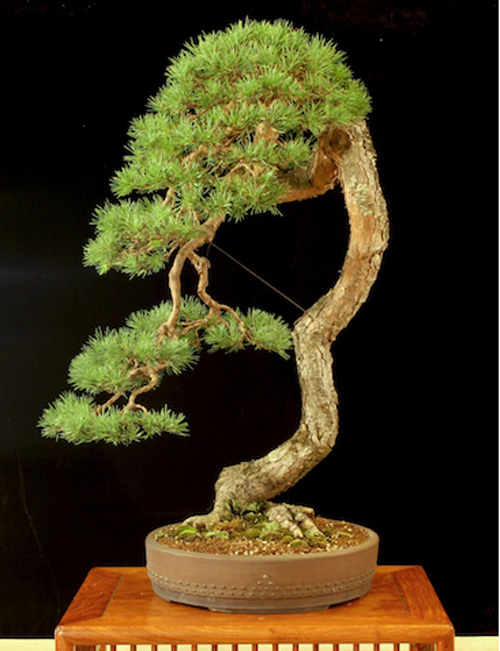 This intriguing tree with its unusual movement (looks like clip-and-grow) was field-grown in Maine by Colin Lewis, a well known bonsai artist and teacher, and a fellow transplanted northern New Englander.
This intriguing tree with its unusual movement (looks like clip-and-grow) was field-grown in Maine by Colin Lewis, a well known bonsai artist and teacher, and a fellow transplanted northern New Englander.
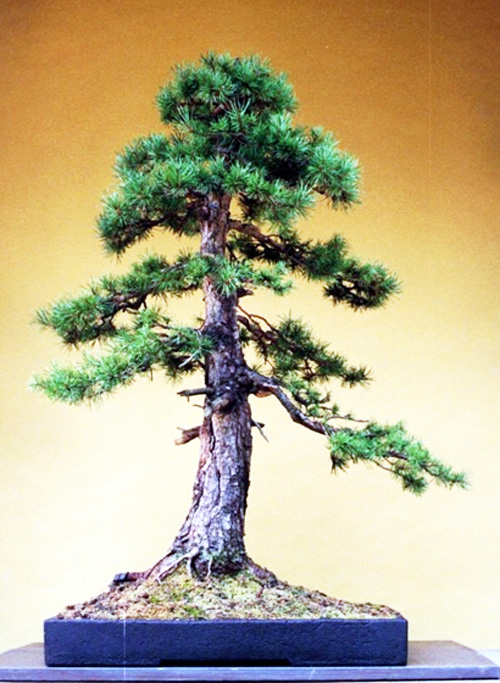 At a glance I thought this Scots pine by Nick Lenz was another of his larches. Most of the good Scots pines you find are in Europe for obvious reasons, but I did manage to find a a few good ones that migrated west (see immediately above and below for the others). This photo is from an Art of Bonsai pine gallery.
At a glance I thought this Scots pine by Nick Lenz was another of his larches. Most of the good Scots pines you find are in Europe for obvious reasons, but I did manage to find a a few good ones that migrated west (see immediately above and below for the others). This photo is from an Art of Bonsai pine gallery.
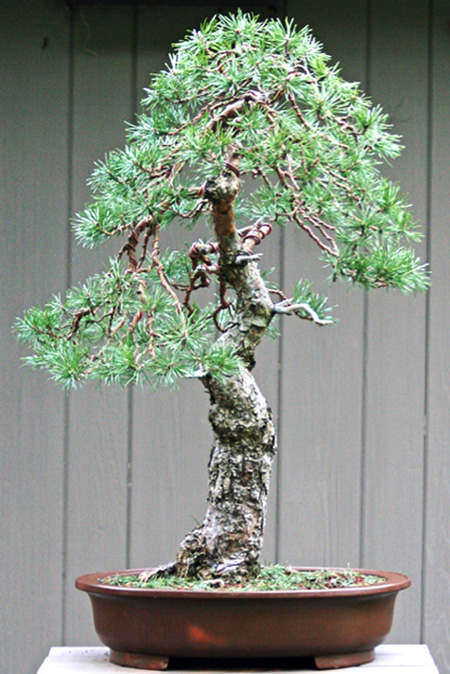 A simple tree with simple lines and good taper. It’s at the New York Botanical Gardens.
A simple tree with simple lines and good taper. It’s at the New York Botanical Gardens.
Have you seen our Masters’ Series Japanese Black and White Pine Book? Though it’s not specifically about Scots pines, most of the information is useful with most pines.
A Dansai pot is a pot made by Dan Barton.
Indeed it is Scots, not Scotch. Word has it that the pine was named by Queen Elizabeth 1 for Sir Walter Scott, but the spelling changed. Either way, scotch is whisky and only whisky (another word that is often mis-spelt).
As for Dansai – anything bonsai related emanating from Dan Barton is Dansai, in the same way as a potential bonsai is potensai, and the things you see in the malls at Christmas are junksai. You’ll get the hang of it….
I wasn’t aware that NY Botanical Garden had a bonsai collection. Did you mean Brooklyn Botanic Garden?
Buds back well, short needles, flexible, great bark; whats not to like?
I’m even growing them in Hawaii, albeit at 4 thousand feet.
Hello Colin et al.
I never cared for potensai etc very much and fortunately, you don’t see it all that often, though those dreaded ‘sais’ do pop us now and then. Now, for some reason we have Dansai? What’s the special status? And what about Lewisai or Colinsai? Maybe Masasai needs to be considered?
Hi Maggie,
Did you try the link?
Thanks Bruce,
It has been years since I’ve even touched a Scots pine, but now that you mention it I do remember the Beuronensis with its small needles and other good features and its ready adaptability to bonsai.
And Hawaii no less! Who knew?
Wayne,
Dan was probably the first to stick a ‘sai’ on the end of something other than Bon so is allowed to keep the title and honour in my book. i will go with you that potensai is a pretentous term as a seed would fit that category quite happily, but everyone makes a few little errors. We dont tho suddenly have ‘dansai’ as it probably predates your entry to the bonsai world by quite a long way so you could say we suddenly have wayne in bonsai !
Thanks Marcus,
Okay, we’ll give Dansai a pass. A little reluctantly however.
BTW: when do you imagine I entered the bonsai world?
Queen Elizabeth I had been dead for over a century when Sir Walter Scott became famous as a writer. And why would an English monarch be in charge of naming Scottish flora?
But, yes, Scotch is what you drink, Scots is what you are (if you are).
Wonderful, trees, though. Thanks!
Hi Nikki,
Thanks for the little piece of Brit history.
I take issue with both you and Colin, but just barely. First I agree that Scots is preferred (even correct). But there is this thing about usage. If you look around the web for Scotch pine, you find plenty benighted souls using that spelling (and presumably pronunciation). So, when does usage trump our notions of what is correct (if it didn’t then we’d still be speaking like Chaucer, or…?)?
Wayne, if you look around the web you’ll probably find equal amounts of that which is correct and true, and that which is not. Which explains why I got it wrong about Sir Walter Scott!
When it comes to scientific nomenclature it’s usually the first recorded accurate identification and naming of a species that takes priority over others. If we follow the same principle, the earliest common name should be regarded as correct – in this case “scots”.
If we accept common usage of incorrect terms qualifying them as valid, then u n i will have 2 w8 4 a while 2 c if texting abbreviations become correct usage. At which point, I will shoot myself! ;)
Colin,
Please don’t shoot yourself (well, maybe just in the foot). Meanwhile I’ll stick to my guns.